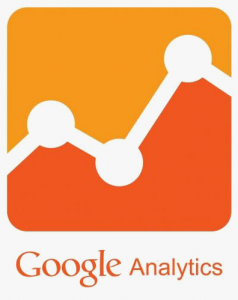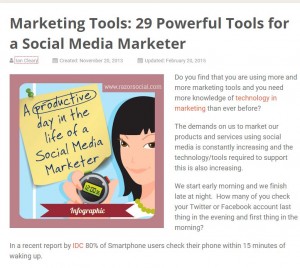 You are probably reading the headline and wondering what on earth is CMQP. Well you will not have heard it before, it is a Sandraism (basically something I made up). In the future when it becomes big you can say you heard it here first :-). So where did it come from , what does it mean and how can you use it to help you in your business?
You are probably reading the headline and wondering what on earth is CMQP. Well you will not have heard it before, it is a Sandraism (basically something I made up). In the future when it becomes big you can say you heard it here first :-). So where did it come from , what does it mean and how can you use it to help you in your business?
I was on my way to a client to discuss their content marketing strategy and I wanted to make it easy for them to plan and implement their content marketing plan so I had light bulb moment in the car (well I like to think it was a light bulb moment). I decided to take the process and break it into 4 key steps.
- C – customers
- M – medium
- Q – questions
- P – planning
Before we get started let me talk a bit about content marketing and what it is
What is content marketing?
“Content marketing is any marketing that involves the creation and sharing of media and publishing content in order to acquire and retain customers” Wikipedia
It is about creating content in different forms for your customers to draw them into your website. It should not directly sell but showcase your expertise, passion and show them that you are the right person for the job. I am always asked ” why write blogs that clearly tell people how to optimise their websites?” My answer is simple. Out of all the people who read my articles, not many will want to do it themselves. They just want to find the right person for the job and writing good blog posts that show I have expertise in the area does just that.
Why use content marketing?
It is important to know why you are using content marketing? Please do not use it purely to aid with your SEO. Yes it can definitely help with your search engine optimisation but sit down and list your objectives. Some example objectives are:
- Increase traffic to website for a range of new target search phrases – be specific about your targets e.g. 10% web traffic to be generated from our content marketing
- Increase awareness of new products and services
- Build your email marketing data base so you can send them marketing communications via email
- Attract people into the website at different stages of the buying cycle and nurture them through the stages so they become customers
It is important that once you define your objectives that you design your blog pages according to your objectives. For example, if you are trying to build your email marketing database ensure that you have a clear call to action where people can sign up . It is important to give them an incentive and benefit. Why should they sign up? What is in it for them? Here is a good example from www.socialmediaexaminer.com
So now that you understand what content marketing is and how you can use it, lets get to the CMQP.
Customers
 The first step in any good content marketing plan is understanding who your customers are and what they need from you. I have seen so many examples of bad content marketing down through the years. Businesses writing for the sake of writing because they were told it was good for SEO. Companies talking about topics that in no way relate to their products an services. They were advised to write about something that would bring in lots of traffic. Never mind the quality of the traffic, any traffic would do.
The first step in any good content marketing plan is understanding who your customers are and what they need from you. I have seen so many examples of bad content marketing down through the years. Businesses writing for the sake of writing because they were told it was good for SEO. Companies talking about topics that in no way relate to their products an services. They were advised to write about something that would bring in lots of traffic. Never mind the quality of the traffic, any traffic would do.
This is crazy. When you are getting started into your content marketing plan think about who you are writing for. Break your customers into key segments. You may have already gone through this process. If not take time to create your customer profiles. This will help with all areas of marketing and will ensure that when you create great content you are creating it specifically for your customers. You need to know your customers before you can create content for them.
Put a face and name to your customer profiles – it will help you to connect with them better and when you are writing you will be writing specifically for them.
Medium
What platforms will you use to reach your customers? What media will you use? Understanding your customers will really help with determining what platforms and media type to use. There are many media types you can use including:
- Video – you can use video to create how-to guides or a case study
- Images – you can tell a story using images . Infographics are very popular online right now.
- Text – you can provide information to your customers like this post. If your content is going to be text heavy it is important that you break it down into key sections and where possible use bullet points and images to break up the heavy text elements
- Audio – create an audio file. This is becoming quite popular as people are on the move and an audio file allows them to listen in while sitting in traffic or on their way home or even on their way to a meeting.
No matter what you use, always remember that to make the content search engine friendly you need to include words. Search engines need the text elements to gauge what your content is about. Here are two great examples of great content using audio/video and text.
-
Infographic example: Ian Cleary, Razorsocial created this content http://www.razorsocial.com/marketing-tools/ a good while ago but I always refer to it as a well written piece of content that is written for his customers but also has a visual impact. When you scroll down a little on the page you will see an infographic “A productive day in the life of a social media marketer”. The article is easily sharable to any social media platform. The images are good quality and the entry image includes the title. This makes it perfect for sharing on image based social platforms like Pinterest.
- Audio example: I am a big fan of Jon Loomer. If you are interested in Facebook advertising I highly recommend his site. This is one of Jon’s latest posts http://www.jonloomer.com/2015/02/09/facebook-ad-targeting/. On entry you are given a audio option to listen to blog post or you can read the copy that is included. Great for his customers and great for search engines also.
So now that you know what medium and media you will use its time to think about what you will write about.
Questions
I find the most successful content is when you answer a question. Provide content that solves a problem. It may be a problem customers may not realise they have yet or it can be the answer to questions you asked get every day. Think of all the questions you get asked about your product, service or industry. Can you create valuable content answering these problems? The answer is yes.
Do you engage with customers regularly or are there other people in the business that can help with this? I love getting a few people into a room and brainstorming ideas. Create a list of questions that you often get asked. This can be the starter point. Now we get to the planning stage.
Planning
Planning is important but there is no point in planning if you are not going to implement, track and analyse. This stage allows you time to create a plan of action. I usually create a spreadsheet where I fill in the following headings for each piece of content that will be created.
- Day / Week / Month: the day, week or month that the content is needed for (there will be a specific publish date also – see below). It is important that you give yourself time to create the content and have it proofread and edited. Never proof read your own content.
- Title/topic – Outline what the content will be about . At this stage it can be broad and you can firm up the title when it is ready to be published
- SEO target keywords/ search terms – what will you be optimising the content for? What keywords or search terms do you want this piece of content to be found for in search engines?
- Objective – What is the objective of this piece of content? Why are you creating this content? What are you trying to achieve with this content?
- Media: What media will you use for this piece of content e.g. blog article with video or blog article with infographic
- Who: Who is responsible for creating the content?
- Publish date – The date you will be publishing it on your website
- Social Media Sharing: What social platforms will you share it on and when?
Now that your spread sheet is ready you need to consider one final thing:
 Tracking and Analysis
Tracking and Analysis
How will you track the success of each piece of content and what tools will you use? Google analytics is a great free tool that will tell you a lot about your content’s success. How many people visited the page. How long they stayed on the page What % bounced. What conversions came from that page etc. It is important that when creating content you outline your goals and objectives. What factors will you track that will tell you that the content is a success? Find the tools to enable you to measure these goals. Some suggestions:
- Google analytics – this will allow you to track all your website visitors and learn from their activity what is working and what is not
- Mouseflow – this is a fantastic tool where you can see recordings of your website visitor mouse movements as well as hover vs. click rates on links etc. The only problem with this tool is that it is very easy to spend hours on it looking at the mouse movements recordings
- Google alerts – track mentions of your website etc on the web
- Mention.net – this will allow you to track mentions of your website etc across the web and social media
So there you have it, the CMQP of content marketing. I hope you found it useful. I would love your feedback. How do you plan your content marketing?


